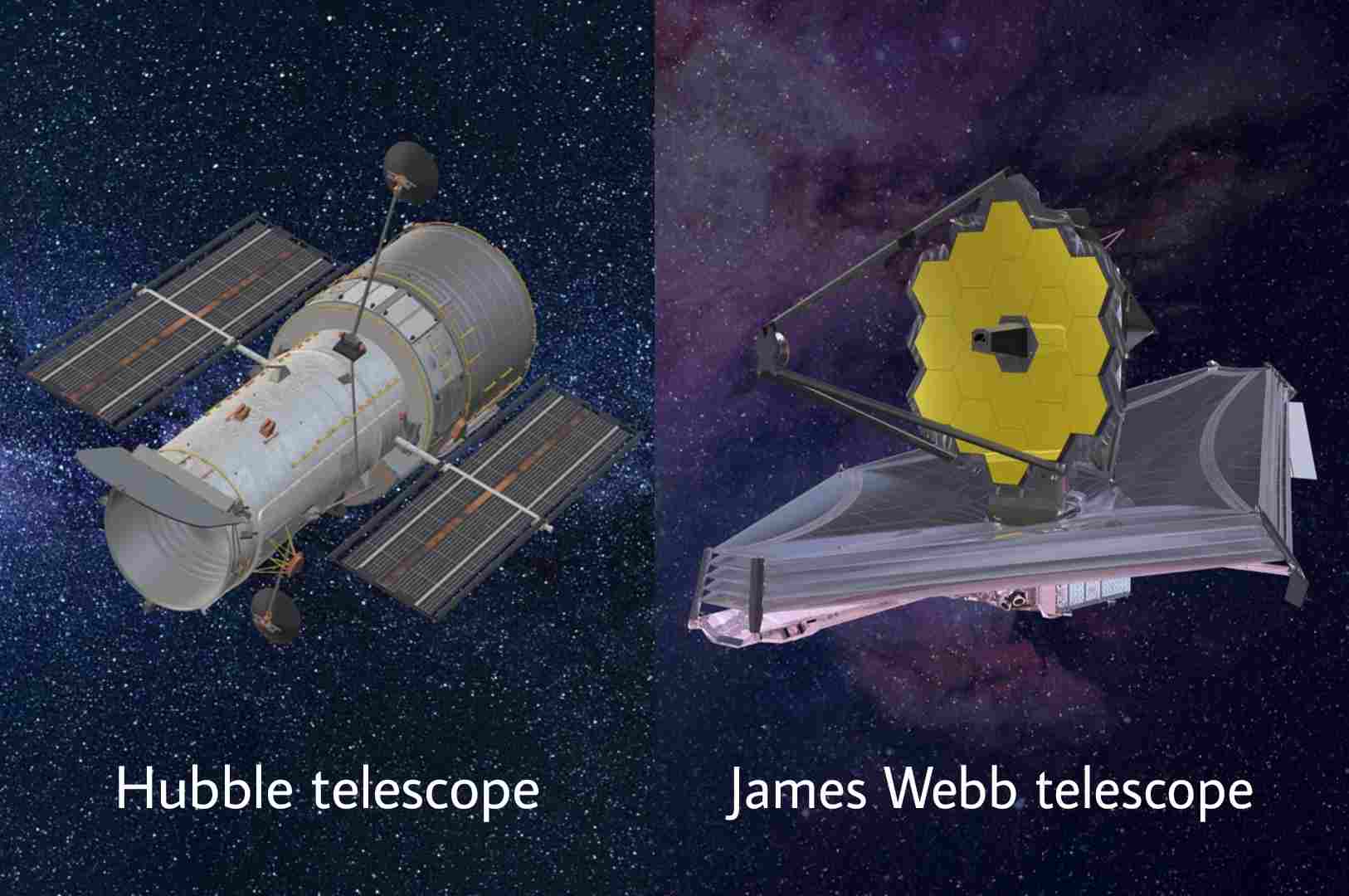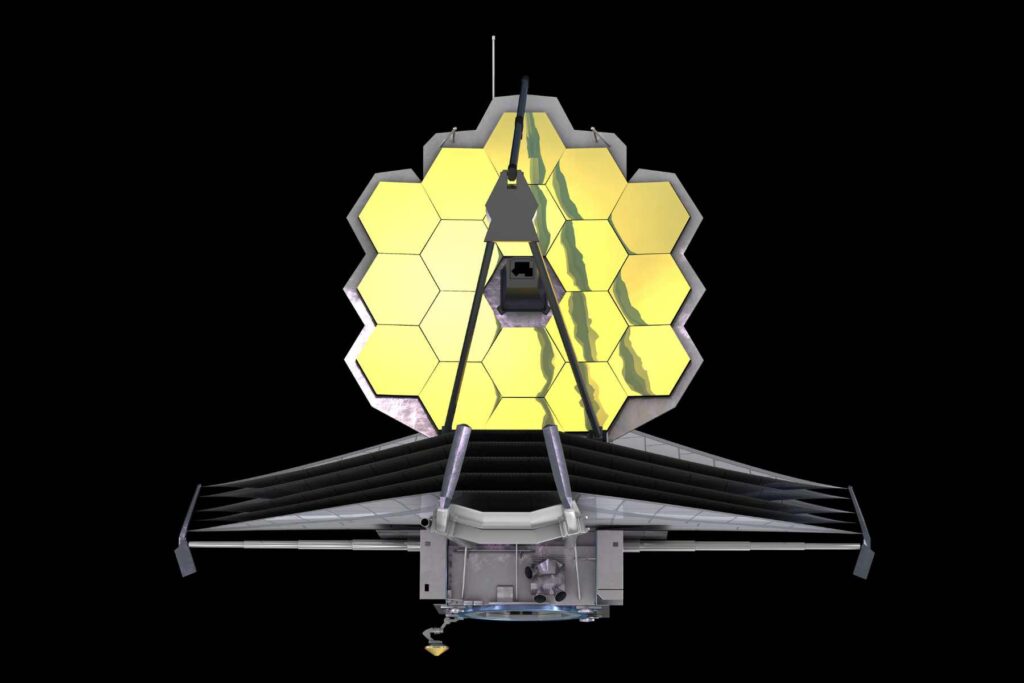NASA and other space research centers conduct researches to know the formation of the galaxies, composition of the planets, and other celestial objects present in space. The main aim behind these is to find the resources of water outside the Earth and the existence of humans in other planets or galaxies.
Today, we will explore why is the James Webb Telescope better than Hubble and explore the benefits of the James Webb Telescope and get knowledge about the formation of the galaxies with the help of infrared resolution images captured from it.
What is James Webb Telescope?
James Webb Telescope also known as Webb or JWST, is a space observative which is capable of capturing infrared resolution images of Space. The James Webb Telescope will cover the wavelength up to 100 million years back. This will allow the researchers and scientists of space research centers to explore the formation of galaxies, their mass, and the composition of the planets.
The James Webb Telescope will discover the formation of galaxies, how the galaxies got the super-massive black holes in their centers, or the black holes that formed the galaxies and vice versa. The stars and planets which are formed and in their initial stage are only visible through infrared wavelengths. This will be possible with the help of the James Webb Telescope.
Timeline of James Webb Telescope
James Webb Telescope was launched in 1966 by NASA, it was proposed to be launched in 2011, but due to technical reasons, it was postponed till 2021.
Difference between James Webb Telescope and Hubble Telescope
| James Webb Telescope | Hubble Telescope |
| Is capable to capture infrared resolution images. | Is capable to capture optical and ultraviolet images, it has a low capacity for capturing infrared images |
| Provide coverage from 0.6 to 28 microns. | Provide coverage from 0.1 to 0.8 microns |
| The electromagnetic. spectrum goes from about 0.75 microns to a few hundred microns | The electromagnetic spectrum goes from about 0.8 microns to 2.5 microns |
| Have approximately 6.5 meters in diameter primary mirror | Have approximately 2.4 meters in diameter primary mirror |
| Orbits around the Sun which will be 1.5 million km away from the Earth | Orbits around the Sun at an altitude of 570 km above the Earth |
Key Facts about James Webb Telescope
Premiere Observatory
James Webb Telescope will allow observing the planets and stars back in the time of about 100 million years.
Largest Telescope
James Webb Telescope will be larger as compared to Hubble Telescope.
First Stars and Galaxies
The James Webb Telescope can capture infrared resolution images, which will be able to capture the images back in the time of about 100 million years.
How Galaxies assemble?
James Webb Telescope will be able to see back in the time of about 100 million years which will allow us to observe the formation of the galaxies
Birth of Stars and Planetary Systems
The new stars and planetary systems can be observed through James Webb Telescope as it has the capability of capturing infrared resolution images
Exoplanets
The James Webb Telescope will study the celestial objects of the solar system and research more about its mass and composition, probability of having life on other planets of the solar system, and other celestial bodies outside of our solar system.
Orbit
James Webb Telescope will orbit around the Sun at Lagrangian point 2 (L2) i.e. far away from the Earth to keep the temperature of the James Webb Telescope down to prevent the damage of the parts of the James Webb Telescope.
| Overview on new-age Giant Magellan telescope, James Webb |
Is there a danger from micrometeorites?
The James Webb Telescope can handle the effects of micrometeorites. Therefore, it is no longer a danger from the collision with micrometeorites. NASA has tested beryllium discs for micrometeorites using test facilities in the US.
What is the mission of the James Webb Telescope in Space?
James Webb Telescope will be launced in space in 2021. After being launched, it will rotate around the Sun at the L2 Lagrangian point, far away from the orbit of the Earth. The James Webb Telescope will rotate far away from the orbit of the Earth so that the temperature of the equipments and machineries used in the telescope can be kept down and protect form the damage due to heat of the SUn.
The James Webb Telescope is not kept in the Earth’s atmosphere as the atmosphere absorbs the Infrared rays. The James Webb Telescope have a larged mirror formed with the help of multiple small mirrors so that it becomes easier to send it in space through the space vehicle.
The shape of the mirror is kept hexagonal, as square mirrors will not absorb all the light and the round mirrors will create gaps in between them missing the light rays. This will also help us to observe the planets directly with the high resolution cameras.
The James Webb Telescope will last only 10-12 years. The equipments used in the telescope which are used as a coolant to keep the temperature of the telescope down have only a shelf life of 10 years. Higher temperature damages the machineries of the telescope.
Furthermore, it can not be human-serviced as it will be far-away from the Earth. The scientists may invent some new techniques to service the James Webb Telescope and extend its life but it can not be predicted.
Conclusion
In today’s article, we have learned about why is James Webb Telescope is better than the Hubble Telescope, the key facts about the James Webb Telescope, how will the James Webb Telescope help researchers and scientists to explore space and in return, help mankind.
I hope you enjoyed the article (Why is the James Webb Telescope better than Hubble?) I was able to answer all of your questions. Ask any queries you may have in the comments section below. Please do not hesitate to contact me if you have any queries concerning the James Webb Telescope or any other subject in the relevant field.
FAQ related to (James Webb Telescope Vs Hubble telescope?)
Q- How far back in time can the Hubble telescope see?
Ans- Hubble Telescope can see about 10-15 billion light-years back in time
Q- Is Hubble Telescope still in space?
Ans- Yes, the Hubble Telescope is still in space for the last 31 years and as per NASA’s announcement, it will stay for many more years.
Q- Is Hubble Telescope still being used?
Ans- Yes, the Hubble telescope is still used to make ground-making observations and contact other space observations.
Q- Will there be a better telescope than the Hubble Telescope?
Ans- James Webb Telescope is a better telescope than the Hubble Telescope as James Webb Telescope provides infrared resolution images.
Q- What kind of telescope is James Webb Telescope?
Ans- James Web Telescope is a reflecting telescope in which 3 curved mirrors are being used. It’s a 3 mirror anastigmat.
Q- Why is the James Webb Telescope so important?
Ans- The James Webb Telescope will find the formation of the galaxies and the universe with the help of infrared resolution images and pass through dusty clouds to see the formation of the stars.
Q- How long will James Webb Telescope last?
Ans- James Webb Telescope will last for about 5-10 years.
Q- Will James Webb Telescope see exoplanets?
Ans- Yes, James Webb Telescope is designed to see exoplanets.
Q- How far will James Webb Telescope see?
Ans- James Webb Telescope will see about 100 million years back after the Big Bang.

